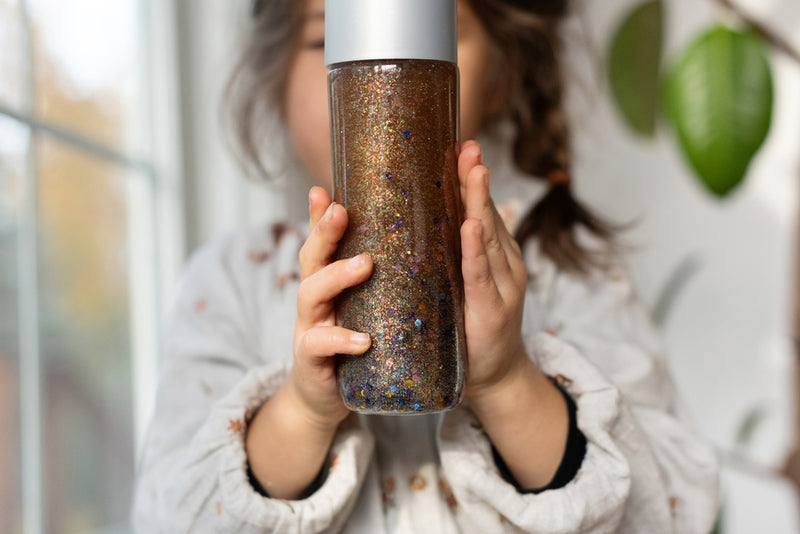
Most people have heard the term mindfulness, but do you know what it means?
Often it makes people think of meditation and yoga. And yes it is closely associated with both these things because they share a common goal of promoting present moment awareness, self-awareness, and overall well-being.
But mindfulness can be practiced in many other ways too.
So what is mindfulness?
Mindfulness is the art of being fully present, aware, and engaged in the moment without judgement.
An easy way to think of it is to ‘be here now’ - bringing all our sense and our attention into our body, into the present moment.
As opposed to thinking or ruminating about the past, or thinking or worrying about the future, we turn our thoughts to what’s happening right here, right now.
It’s something that we can consciously practice and cultivate more of in our lives. And it’s also something we all engage in without even realising it.
We’re practicing mindfulness when we are looking at a beautiful sunset, or playing with our pet, or getting lost in a song, or being immersed in a book, or belly laughing with friends.
They’re the moments where we are completely absorbed in what we’re doing, our analytical mind fades into the background and we are fully present and engaged in what we’re doing.
If we already experience mindfulness why do we need to practice it?
In our modern world, the fast rate of technological and societal change has meant more multitasking, digital distraction, a fast paced lifestyle, and sensory overload that our brain’s biological evolution has struggled to keep up with!
But our ability to adapt, learn and evolve is powerful, and mindfulness is a way we can support ourselves to experience more calm and more well-being.
In fact, mindfulness has been shown to have a relaxing effect on the brain. It activates the parasympathetic nervous system, which is responsible for the body’s “rest and digest” response.
This activation can lead to a decrease in the production of stress hormones, such as cortisol, and an increase in feelings of calmness and relaxation.
Research also shows that a regular mindfulness practice can lead to beneficial structural changes in the brain that support emotional regulation and reduce the intensity of the “fight or flight” response, which we find ourselves in more often these days.
What are some of the other benefits of regularly practicing mindfulness?
- Less stress
- Improved focus
- Emotional regulation
- More self-awareness
- Reduced anxiety
- More compassion
- Better sleep
- More resilience
- Enhanced immune function
- Less rumination (repetitive negative thinking)
- Mind-body connection
- More gratitude
Mindfulness for kids and teens - why and how?
Introducing our kids and teens to mindfulness not only brings them all the above benefits, it also teaches them an invaluable tool they can use throughout life. And the more they practice it, the easier and more natural it becomes.
We’re also teaching them that they can have a powerful impact on their own well-being.
If you want to try practicing mindfulness with your kids or teens you can start by explaining what it is - I like the explanation that it means paying special attention to what you’re doing and how you’re feeling right now.
Below are some activities you can try with your kids and teens.
Mindfulness activities for kids
Five Senses Exploration: Have them sit quietly and name five things they can see, four things they can touch, three things they can hear, two things they can smell, and one thing they can taste (adding in a little snack here!). This practice helps them connect with their immediate environment.
Belly Breathing: Encourage them to lie down and place a stuffed animal on their belly. Inhale slowly through the nose, watching the stuffed animal rise with their breath, and exhale through the mouth, letting it fall. This teaches them deep breathing for relaxation. (You’ll find more breathing exercises for kids inside the Grow Journal).
Mindful Colouring: Provide colouring pages and encourage them to colour mindfully, paying attention to the strokes, textures and colours as they create.
Nature Walk: Take them on a nature walk and ask them to observe the sights, sounds, and textures around them, really engaging their different senses.
Glitter Jar Activity: A glitter jar is a great visual representation kids can relate to. Fill a clear jar with water and glitter. Not only does focusing on the glitter bring their focus mindfully into the present moment, but they can also witness how their feelings sometimes mirror the movement and the calming and eventual stillness of the glitter.
The Glitter Jar: A Magical Path to Mindfulness
1. Gather Supplies: You'll need a clear jar with a lid, water, clear glue, and your choice of glitter.
2. Prepare the Mixture: Fill the jar about three-quarters full with water. Add a teaspoon of clear glue (or more, depending on the jar size) and stir until it dissolves.
3. Add Glitter: Sprinkle a generous amount of glitter into the jar. If you like, choose colors that represent different emotions or thoughts.
4. Seal the Jar: Securely close the lid and ensure it's properly sealed with glue if necessary.
5. Shake and Observe: Invite your child to shake the jar gently and watch as the glitter swirls chaotically. Encourage them to imagine their thoughts and worries mimicking the glitter's movement.
6. Settle and Breathe: As the glitter begins to settle, have your child take slow, deep breaths. Encourage them to focus on their breathing and the glitter as it gradually finds stillness at the bottom of the jar.
7. Discussion: After the glitter has settled, engage in a conversation with your child about how the glitter jar represents their thoughts and emotions. Discuss the idea of finding stillness amidst the swirling chaos, just like in their minds.
Mindfulness activities for teens
Breath Awareness: Teach them to focus on their breath for a few minutes each day. Inhale for a count of four, hold for four, and exhale for four. This can help them manage stress and stay centred.
Journaling: Encourage them to keep a gratitude journal, where they write down three things they're grateful for each day. This practice promotes a positive mindset.
Body Scan Meditation: Guide them through a body scan meditation, where they pay attention to each part of their body, noticing any sensations without judgment.
Technology Breaks: Suggest setting aside specific times to disconnect from screens and engage in an activity mindfully, whether it's reading, drawing, or simply sitting outside.
S.T.O.P. Technique: Teach them the STOP technique: Stop, Take a breath, Observe what's happening in their body and mind, and Proceed with awareness.
Mindful Breathing Activity (found inside the Teen Grow Journal):
1. Lie down or sit back somewhere comfy, close your eyes, and let your body relax
2. When you're ready take 3 deep breaths, just noticing what it feels like
3. Imagine taking any tasks, worries, things you need to do, and putting them inside a case just for now, which you can open when you're done. Shut the lid gently
4. Put your hand on your belly and notice how it rises and falls with your breathing
5. Watch how your mind will go off somewhere else, that's totally normal, each time just bring your focus back to your hand rising and falling
6. If you like, count your breathing in small groups, maybe up to 5 and then start again
7. Wherever your mind goes, let those thoughts be ok, everyone has thoughts even during this type of practice
8. Come back gently, over and over, to the feeling of breathing, right now
9. When you're ready, open your eyes, and notice if you're feeling calmer or more peaceful
Anytime kids and teens use our Grow Journals they are practicing mindfulness, so they are another great, and really easy way to bring mindfulness into their every-day.
Whatever you choose, the key is to keep these practices simple, enjoyable, and consistent.
It's important to create an environment where kids and teens feel comfortable exploring mindfulness without any pressure.
It might seem like one more thing to try and get done, but the incredible benefits make it so worth deliberately engaging in mindfulness.
And once we experience how good it feels to slow down a little and be in the present moment, it can become something we really look forward to.
Over time, these practices can become valuable tools for managing stress, enjoying life more, and nurturing emotional well-being.



0 comments